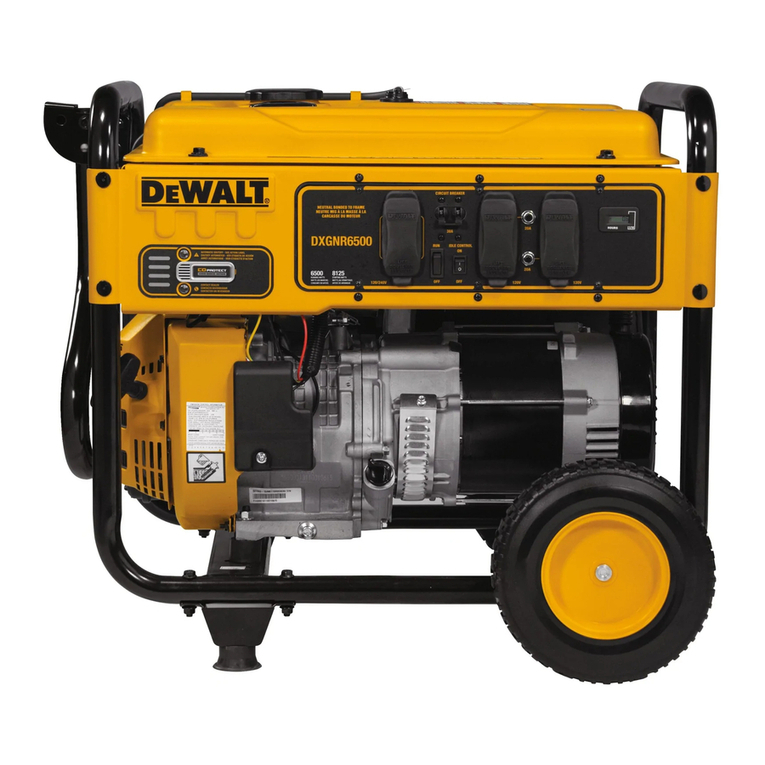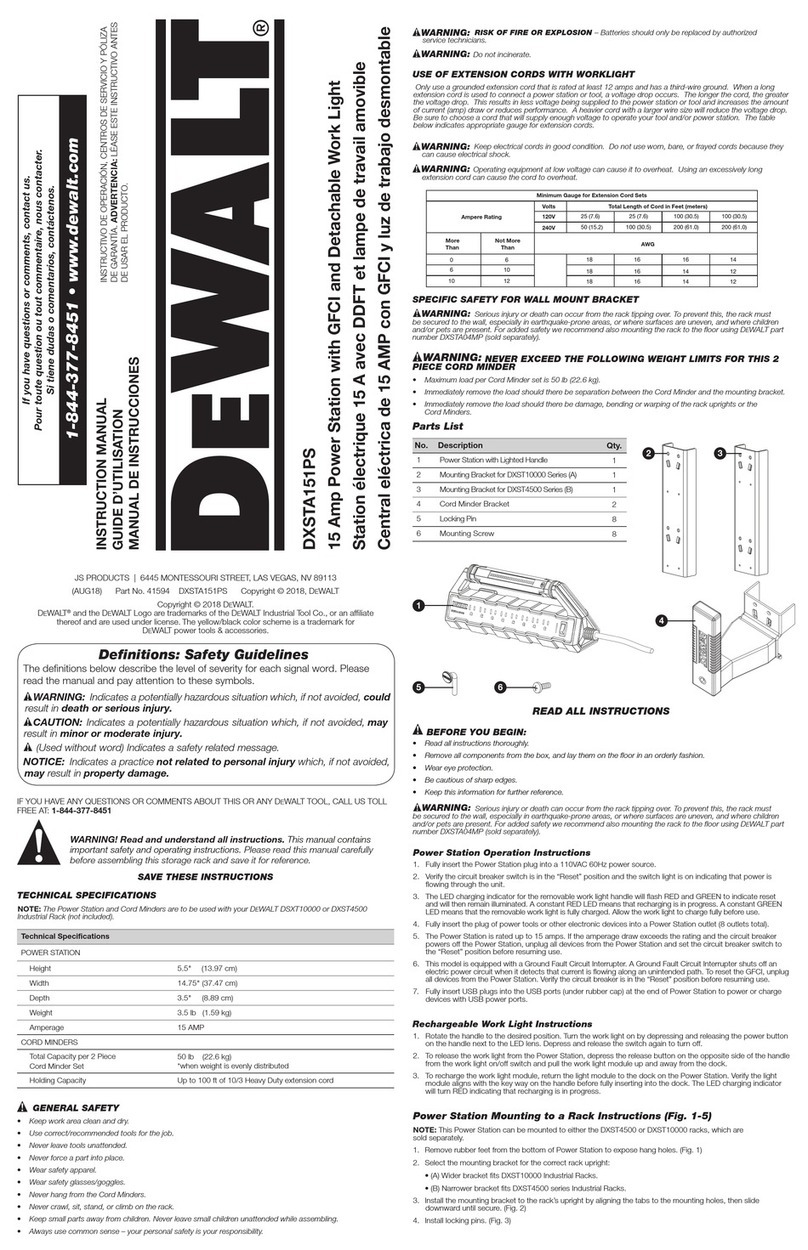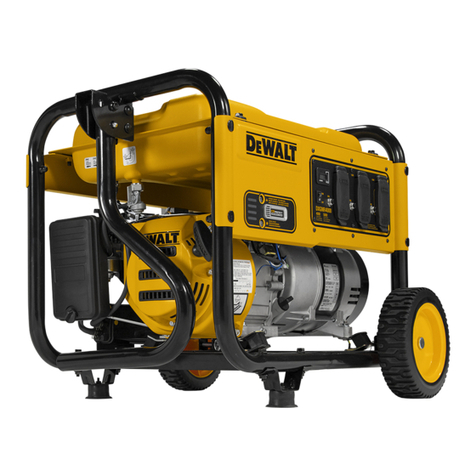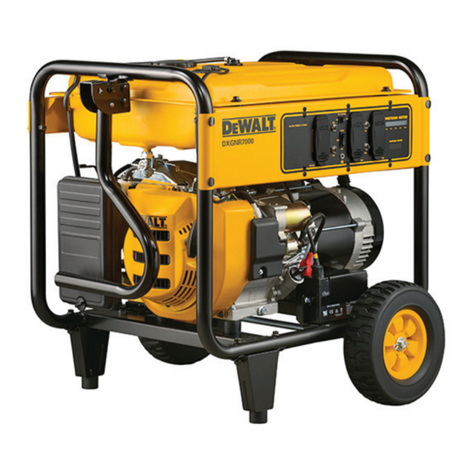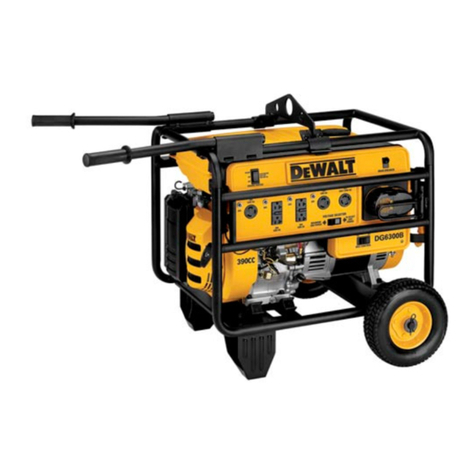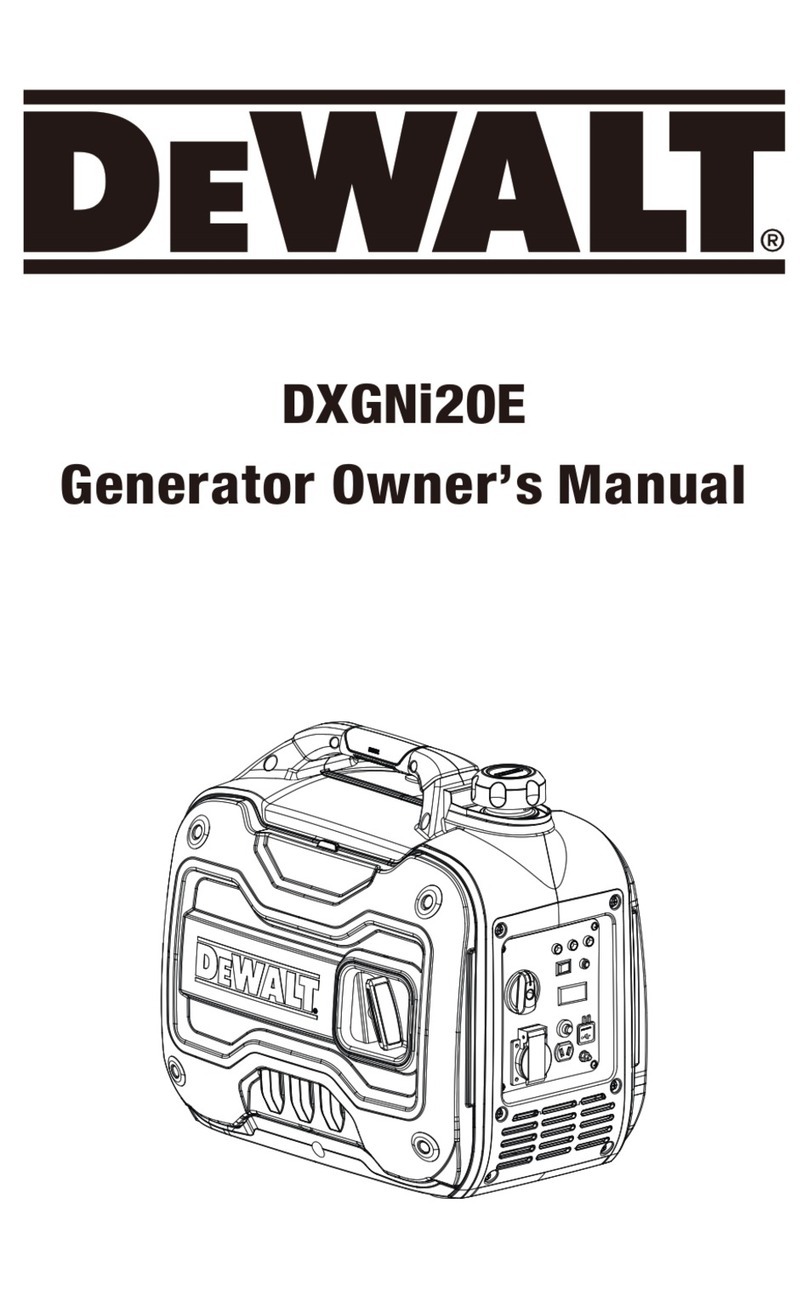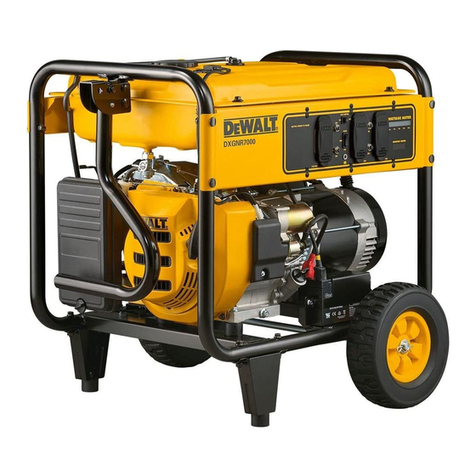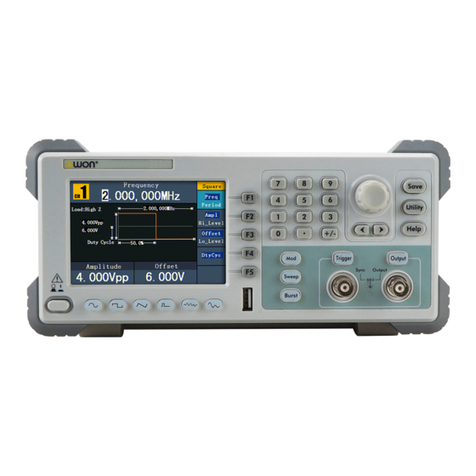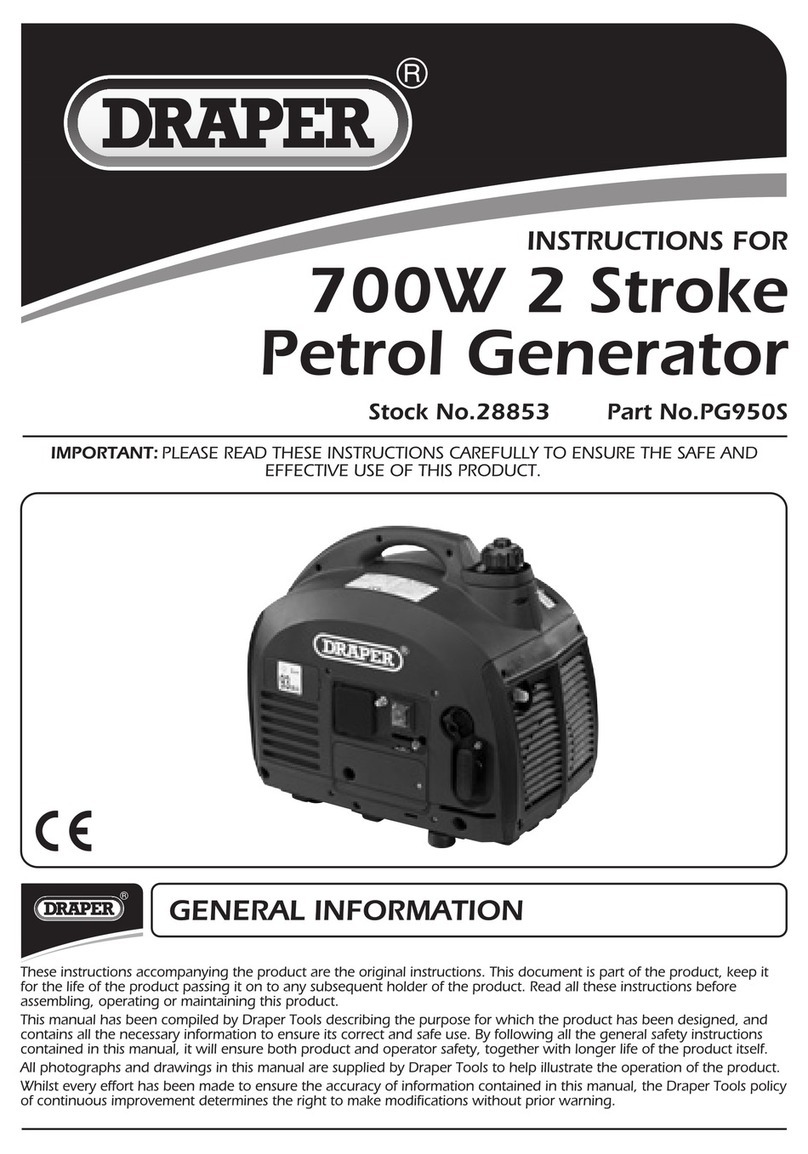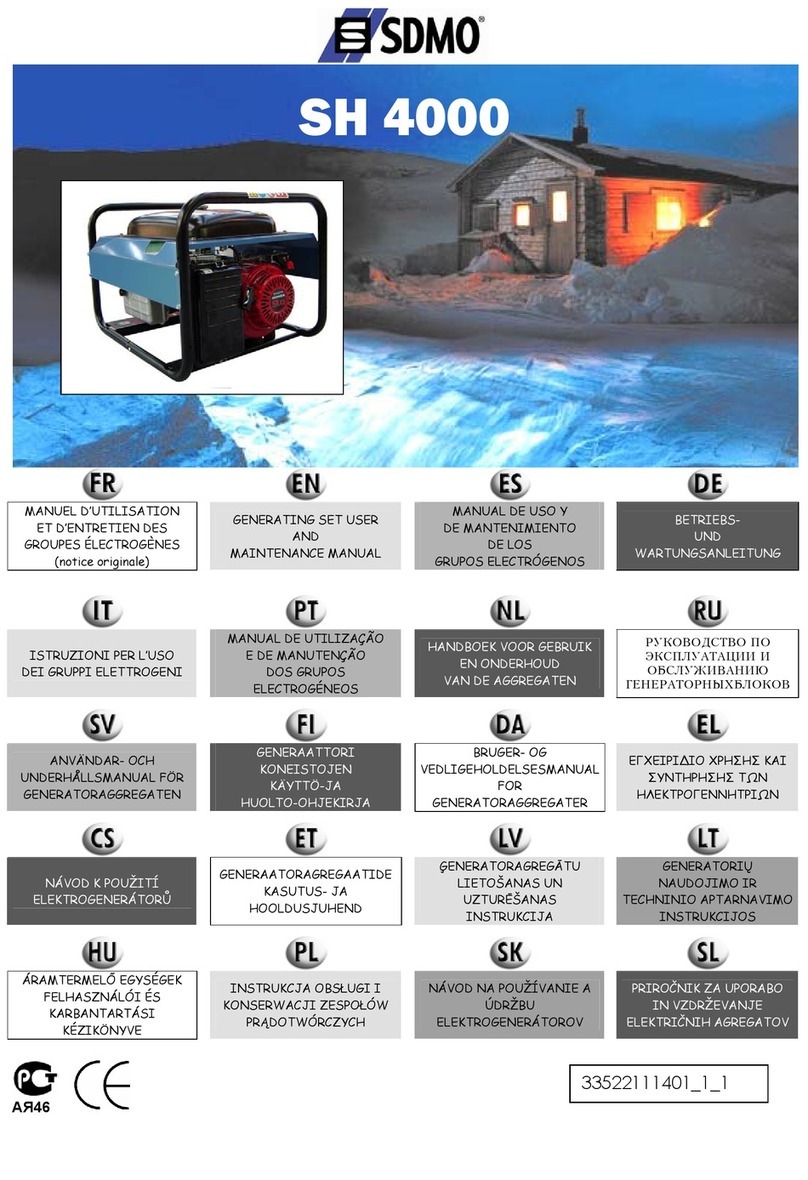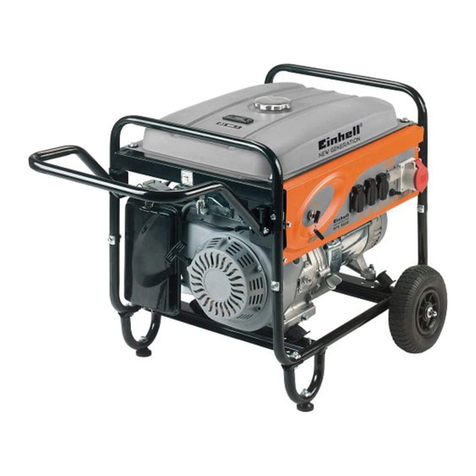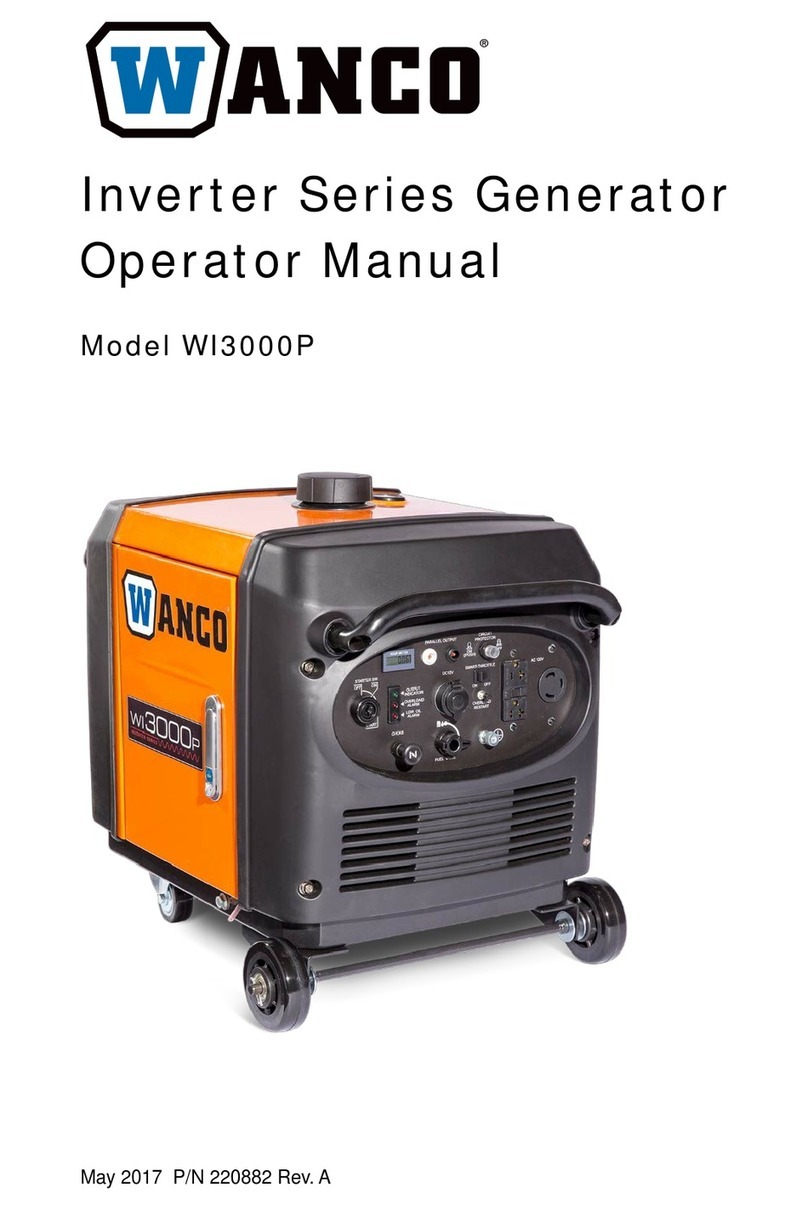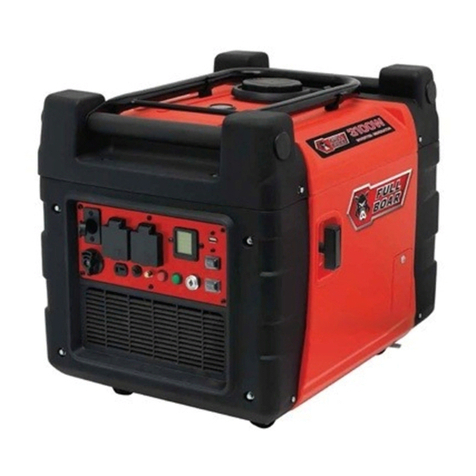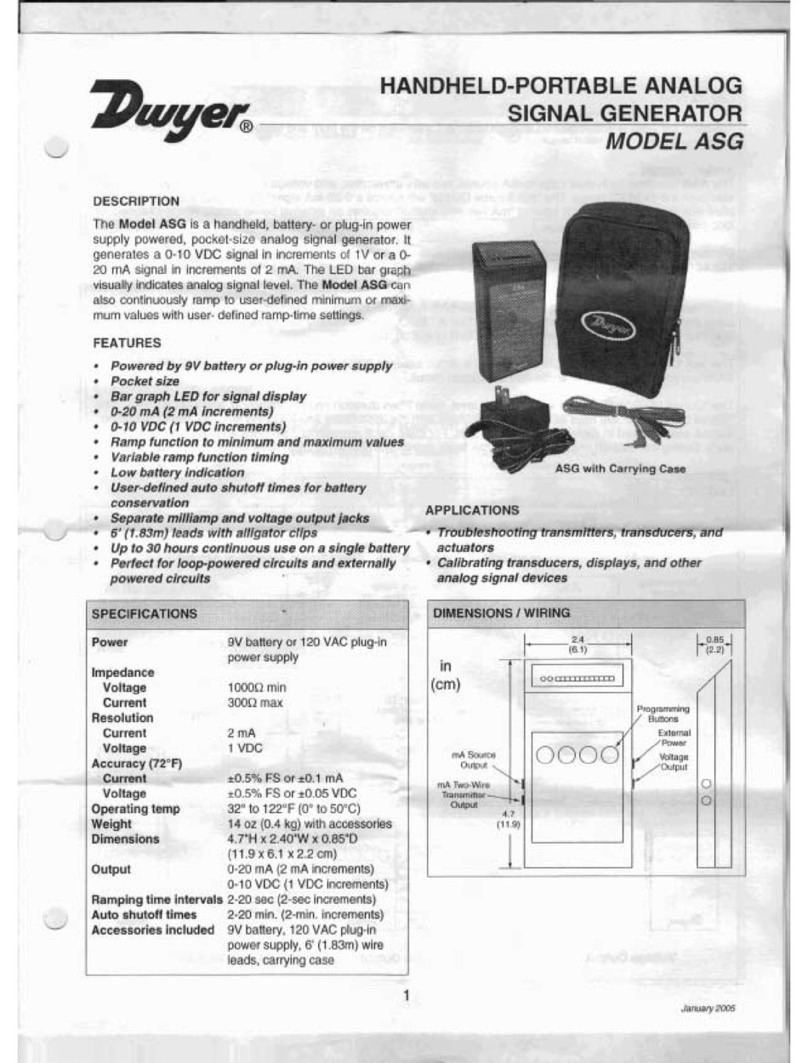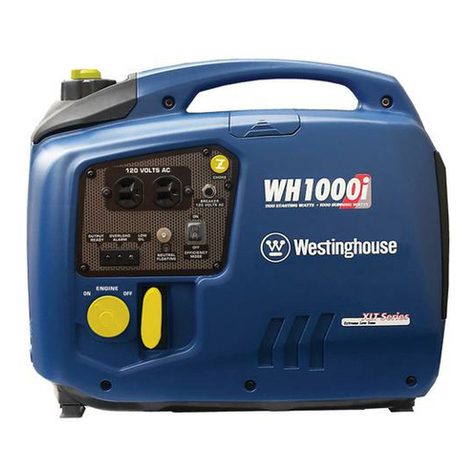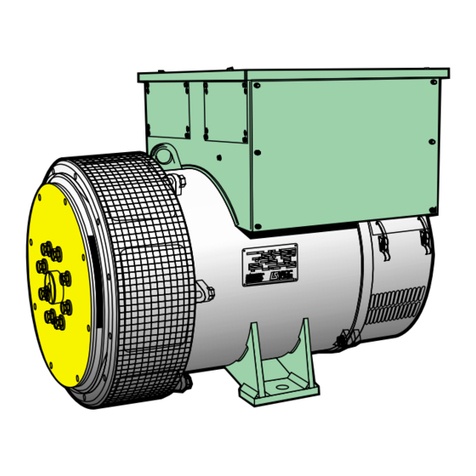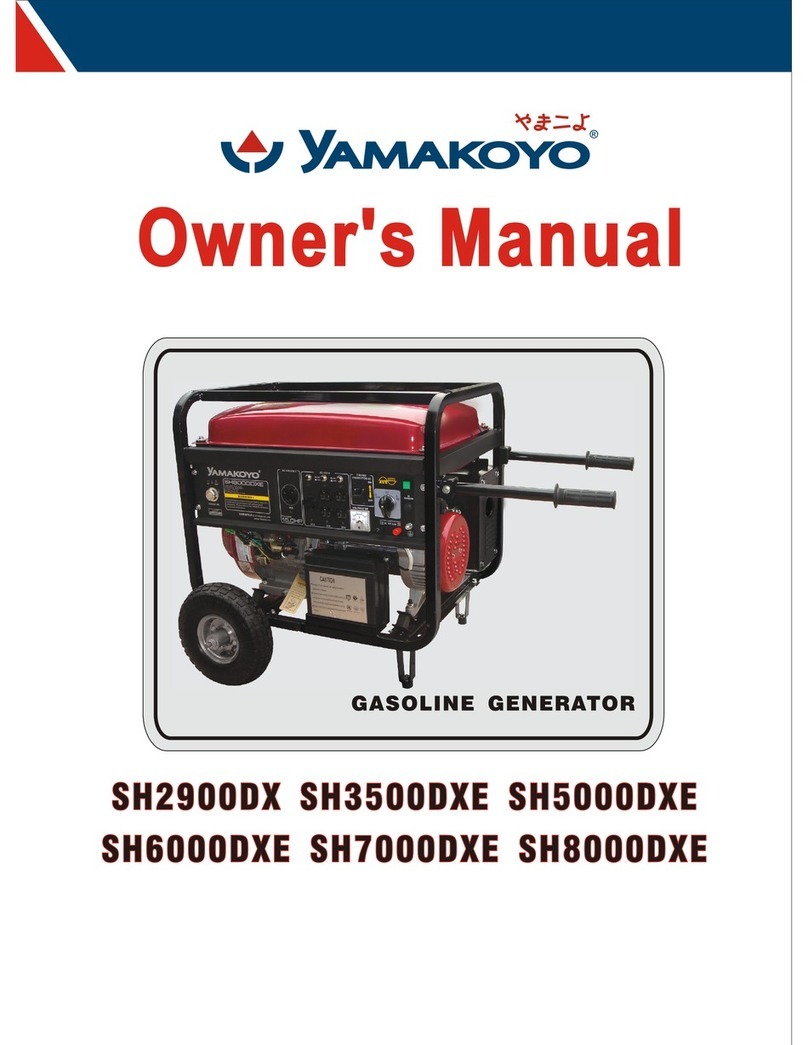
3 Safety Regulations
9
3.2 Description and purpose of the machine
This machine is a portable power source. The portable generator from DEWALT
consists of a steel pipe frame, which includes a fuel tank, a gasoline engine, a
control panel and an electrical alternator. The control panel contains controls and
bushings. When the engine is running, the generator converts the mechanical
energy into electrical energy. The operator connects electronic loads to the mains
sockets.
This machine is used for the electric power supply of connected electric loads. See
the product specifications for output voltage and frequency of the generator as well
as the maximum power limitation of this generator.
This machine was designed and built exclusively for the aforementioned purpose.
Use of the machine for any other purpose could permanently damage the machine
or cause serious injury to the operator or other persons in the vicinity. Machine
damage due to misuse is not covered by the warranty.
The following practices are considered misuse:
Connection to an electric load whose voltage and frequency are not
compatible with the generator output
Overloading the generator with a load that takes too much power during
continuous operation or when starting
Operating the generator in a manner that is inconsistent with the national,
statewide and local standards and regulations
Use of the machine as a ladder, support or working surface
Operation of the machine to carry or transport people or equipment
Operation of the machine outside of the plant specifications
Operation of the machine contrary to warning notices attached to the
machine and contained in the operator's manual.
This machine was designed and built according to the latest global safety
standards. In order to eliminate dangers as much as possible, it was technically
designed with great care and contains protective side plates and warning labels for
an increased safety of the operator. Additional risks may exist despite these
protective measures. These are designated as residual risks. Possible residual
risks with this machine:
Heat, noise, exhaust and carbon monoxide from the engine
Risk of fire due to incorrect refueling procedure
Gasoline or gasoline vapors
Electric shock and arc discharge
Injury due to incorrect hoisting technology
For your own protection and the protection of other people, make sure that the
safety instructions in this manual have been closely read and understood before
starting the machine.

